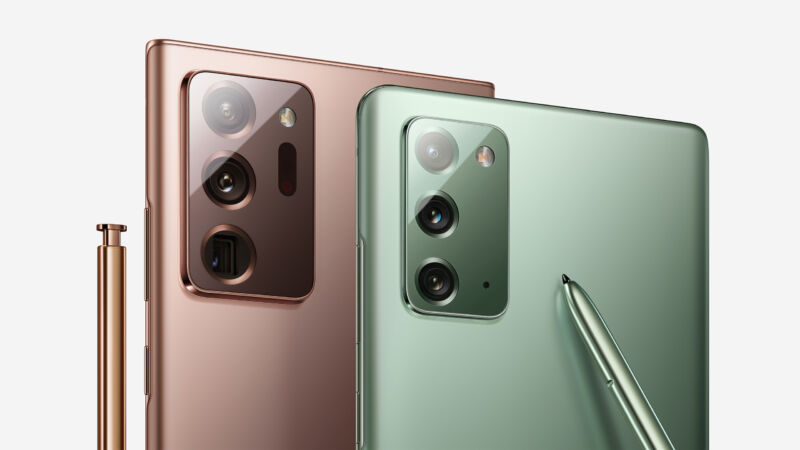
It has been rumored for years, but now even Reuters is claiming that Samsung is killing the Galaxy Note. Samsung's big-screen, stylus-packing phone has struggled for years to differentiate itself from the Galaxy S line, and with the rise of foldables, Samsung apparently doesn't have room anymore for redundant slab phones. Reuters says that "the South Korean tech giant does not have plans to develop a new version of the Galaxy Note for 2021" and "development efforts that normally would have been directed to the Note would now be channeled into its foldable phone range." That would mean 2020's Galaxy Note 20 is the last of Samsung's Note line.
In the early days, the Note line led the charge toward ever-bigger screen sizes, but for many years now, the Note has struggled to justify its existence compared to the mainline Galaxy S series, which gets released earlier in the year. Usually, the Galaxy S and Galaxy Note have similar specs, similar screen sizes, and similar designs, leaving only a stylus as the Note's defining feature. We usually skip reviewing the Note line because there's nothing to say compared to the S phone released earlier in the year, and every year you'll see calls from various outlets to kill the Note because it just has nothing new to offer.
Reuters claims the Galaxy Note's one defining feature, stylus support, will actually be ported over to other devices. The report says the S21 "will have a stylus" and the "next version of Samsung’s foldable phone" (we assume this means the Galaxy Z Fold 3) "will be compatible with a stylus."
It's important to understand the distinction between a stowable stylus and "stylus compatible." The Galaxy Note line famously comes with a stowable stylus, meaning a big chunk of the body is hollowed out so the pen can be stored inside the phone. There are already renders of the Galaxy S21 out there based on the CAD files sent to case manufacturers, and there is no hole in the phone for a stowable stylus. If we want to make Reuters' reporting and the renders align, it sounds like Samsung will sell a compatible stylus alongside the Galaxy S21, but you won't have anywhere to store it.
-
OnLeaks' Galaxy S21 Ultra render. Note the lack of an S-Pen slot.
-
The front.
-
The sides.
The upside to not having stylus storage is that hollowing out the phone does cost a bit in the runtime department, since any spare space in a phone is usually filled with battery. Consider that this year's Galaxy Note 20 Ultra and Galaxy S20 Ultra both have 6.9-inch displays, but the S20 Ultra has a 500mAh battery advantage over the Note (5000mAh versus 4500mAh), thanks to not needing stylus storage.
The Note launches toward the end of the year have mainly only made sense from a marketing standpoint: the Galaxy S line comes out at the beginning of the year, as soon as Qualcomm's new SoCs are ready, and by the time the holiday season rolls around with new iPhones and other competition, Samsung doesn't want to send a nine-month-old phone into the fray. Producing a new phone model, even if it is nearly identical to the model from nine months earlier, gives the tech giant a new round of news coverage, promotions, and other attention it otherwise wouldn't have gotten.
With the rise of foldable smartphones, Samsung's "flagship" lineup doubled in size last year. Besides the usual Galaxy S20 and Galaxy Note 20, there was the phone/tablet hybrid, the Galaxy Z Fold 2, and a foldable flip phone, the Galaxy Z Flip. These two new models offer real differentiation over the Galaxy S line, and with the more crowded lineup, it makes sense to kill the Note line in favor of elevating the Galaxy Fold as the main holiday phone.
reader comments
110